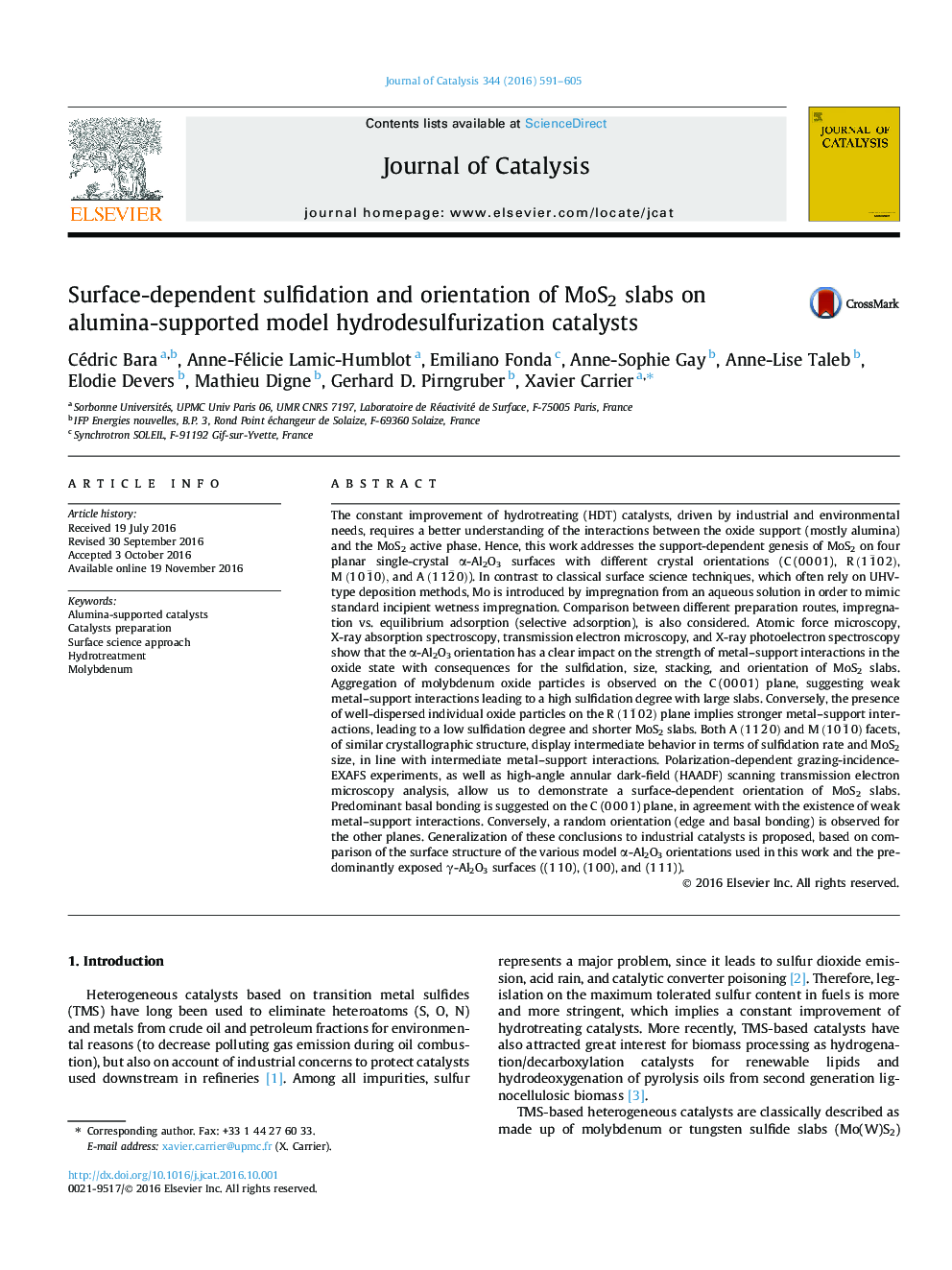| کد مقاله | کد نشریه | سال انتشار | مقاله انگلیسی | نسخه تمام متن |
|---|---|---|---|---|
| 6455889 | 1419765 | 2016 | 15 صفحه PDF | دانلود رایگان |

- Sulfidation degree depends on α-Al2O3 surface orientation (nature of OH groups).
- EXAFS suggests that MoS2 slabs are basal bonded on a weakly interacting surface.
- Sulfidation degree depends on preparation method.
- Results obtained on model systems are extrapolated to industrial-type supports.
The constant improvement of hydrotreating (HDT) catalysts, driven by industrial and environmental needs, requires a better understanding of the interactions between the oxide support (mostly alumina) and the MoS2 active phase. Hence, this work addresses the support-dependent genesis of MoS2 on four planar single-crystal α-Al2O3 surfaces with different crystal orientations (C (0 0 0 1), R (11¯02), M (101¯0), and A (112¯0)). In contrast to classical surface science techniques, which often rely on UHV-type deposition methods, Mo is introduced by impregnation from an aqueous solution in order to mimic standard incipient wetness impregnation. Comparison between different preparation routes, impregnation vs. equilibrium adsorption (selective adsorption), is also considered. Atomic force microscopy, X-ray absorption spectroscopy, transmission electron microscopy, and X-ray photoelectron spectroscopy show that the α-Al2O3 orientation has a clear impact on the strength of metal-support interactions in the oxide state with consequences for the sulfidation, size, stacking, and orientation of MoS2 slabs. Aggregation of molybdenum oxide particles is observed on the C (0 0 0 1) plane, suggesting weak metal-support interactions leading to a high sulfidation degree with large slabs. Conversely, the presence of well-dispersed individual oxide particles on the R (11¯02) plane implies stronger metal-support interactions, leading to a low sulfidation degree and shorter MoS2 slabs. Both A (112¯0) and M (101¯0) facets, of similar crystallographic structure, display intermediate behavior in terms of sulfidation rate and MoS2 size, in line with intermediate metal-support interactions. Polarization-dependent grazing-incidence-EXAFS experiments, as well as high-angle annular dark-field (HAADF) scanning transmission electron microscopy analysis, allow us to demonstrate a surface-dependent orientation of MoS2 slabs. Predominant basal bonding is suggested on the C (0 0 0 1) plane, in agreement with the existence of weak metal-support interactions. Conversely, a random orientation (edge and basal bonding) is observed for the other planes. Generalization of these conclusions to industrial catalysts is proposed, based on comparison of the surface structure of the various model α-Al2O3 orientations used in this work and the predominantly exposed γ-Al2O3 surfaces ((1 1 0), (1 0 0), and (1 1 1)).
69
Journal: Journal of Catalysis - Volume 344, December 2016, Pages 591-605